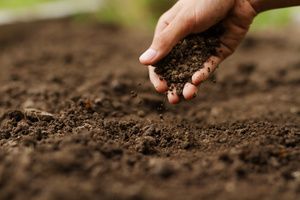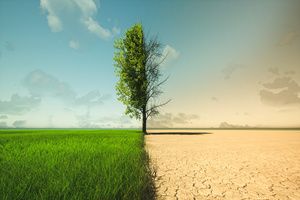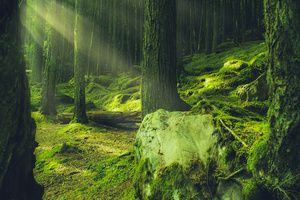How much do you really know about dirt? Despite walking on it every day, most of us don’t give it much thought. However, it is actually a very fascinating material that is responsible for supporting life on our planet. Here is a look at four surprising facts about dirt.
A handful of soil contains more living organisms than the number of humans living on our planet

That may sound hard to believe given that there are around 7.5 billion people living on earth right now, and it’s a number that is constantly on the rise. It is believed that at the dawn of agriculture, there were around 4 million individuals on earth. This figure had climbed to 800 million people around the time of the American Revolutionary War in the 1770s and 1780s, while Earth registered a population of 3.7 billion people in 1969.
While 7.5 billion is indeed a big number – so big, in fact, that many of us struggle to wrap our brains around it – there are around 50 to 100 times more living critters than this within one handful of soil.
Many people are not aware of what is actually found in soil. However, if you put a handful of organic soil under a microscope, you could expect to see somewhere between 10 and 50 billion aerobic bacteria and as many as 100 million different fungal cells, such as mushrooms. You’d also find hundreds or possibly even thousands of arthropods and micro arthropods, along with thousands of different protozoa, nematodes and algae. Interestingly, most of these microscopic species and subspecies have not even been classified yet by soil scientists because they are not sure precisely what they are or what their purpose is.
Of course, the quantity and variety of microorganisms in soil depend on its location, the plants that were growing in the soil, the time of year it is, and the soil’s history-particularly when it comes to damage from fires or floods.
The microorganisms in soil are farming plants while plants farm soil microorganisms
Our primary food crops, which are annual plants, grow quickly and rapidly cover exposed soil, placing carbon-rich biomass back into it to enable the continuation of plant succession. Nature relies on plants to protect the soil with shade and decomposing biomass from twigs and leaves. As this biomass is eaten, it is incorporated into soil by microbial decomposers. As part of this process, the nutrients are then converted into a bioavailable form of nutrition for the plants. This cycle repeats itself over and over.
In fact, soil covers itself. Radiation from the sun kills off the microorganisms that hold exposed soil together, decreasing the soil’s ability to cycle carbon, nitrogen and water, as well as its power to fight pathogens and degrade pollutants.
As a result, exposed soil quickly dies, and weather conditions wash or blow away dead soil. This is also the reason why it’s essential to replace topsoil in the garden, so plants can be revitalized with more nutrition rich soil and continue to flourish.
Improving global soil health could put an end to climate change

Humanity has torn down the forests that were naturally growing on earth and plowed soil, re-releasing methane and carbon back into the atmosphere. This has had an undoubtedly negative effect on the planet and its climate. However, humans do have the power to put an end to global warming while at the same time producing enough food to feed the planet’s population, but we are far away from actually succeeding at this.
Incredibly, soil contains more carbon than the Earth’s atmosphere and all of the vegetative matter on our planet combined. Moreover, certain types of symbiotic fungi known as EM have been shown in studies to cause 70% more carbon sequestration in soil than other types of fungi.
By using ecologically sound, organic and holistic approaches to agriculture, it is still possible to grow the world’s annual cereal crops at a rate that results in the same yield per acre without tilling or destroying soil or using dangerous synthetic fertilizers, pesticides or herbicides.
Even cows and other ruminants grown to consume for protein could be used in conjunction with holistic planned grazing techniques in a way that is good for soil health, as well as greenhouse gas sequestration.
Plowing and tilling soil is akin to bulldozing human cities
Soil can be thought as being much like the earth’s skin. And just like the skin on your body forming a scab when the surface gets scraped, the earth starts repairing its skin when we plow or scrape off its surface by sprouting weeds above the ground that are supported by a range of diverse microorganisms below the ground that are dominated initially by bacteria.
The earth’s skin continuously attempts to return itself to a state of optimal health and stability, which can be manifested with grassland, tundra or mature forest depending on the climate and topography of the area.

Every time we knock down forests or till the soil, we are destroying the complex civilizations of microbial life that were harbored by that soil. Then, to make matters worse, we add toxins to the ground like synthetic nitrogen fertilizers that kill the microorganisms in the soil that can cycle nitrogen naturally. Then, these chemicals work through the dead soil into waterways and aquifers, where they wreak havoc on the environment and human health. They also make crops more attractive to pests. Then, synthetic pesticides are used to try to address these pests, introducing even more toxins into soil and the environment at large.
Many people forget that when the biology of a soil is tuned to the crops or plants it grows, there is no need for synthetic pesticides and fertilizers. Nature is designed to support itself perfectly, with soil microorganisms feeding the plants the precise nutrients they need at the right times, and the plants feeding and nurturing those microorganisms in return. Anyone who doubts this only needs to look at a mature forest to see how ecosystems grow stronger and more resilient every year without any input from humans – a stark contrast to the work needed to maintain industrial farms.
Arrange Your Soil Delivery
If you are looking for high-quality topsoil that can support your gardening efforts, reach out to the Northern Virginia soil providers at Dirt Connections. We offer a range of soil and fill dirt types and can deliver them to your site with our affordable and convenient delivery service. Call us today to schedule your dirt delivery.
Summary

Dirt Connections was started with one goal in mind: providing quality residential and commercial construction services to clients on time and on budget. Reach out for more information on how we can support your next project.
For your convenience our estimates are free and by appointment. Call 703-940-9949 for a free estimate today!









































